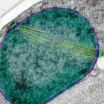(Press-News.org) Communities across the United States experienced an unprecedented decline in crime in the 1990s. But for counties where Wal-Mart built stores, the decline wasn't nearly as dramatic.
"The crime decline was stunted in counties where Wal-Mart expanded in the 1990s," says Scott Wolfe, assistant professor of criminology and criminal justice at the University of South Carolina and lead author of a new study. "If the corporation built a new store, there were 17 additional property crimes and 2 additional violent crimes for every 10,000 persons in a county."
The study, titled "Rolling back prices and raising crime rates? The Wal-Mart effect on crime in the United States," released last month in the British Journal of Criminology, was co-authored with David Pyrooz, assistant professor of criminal justice and criminology at Sam Houston State University.
Wolfe says the commonly known "Wal-Mart effect" is the company's overwhelming influence on numerous economic and social factors in communities, including jobs, poverty rates and retail prices.
The study was not intended to criticize Wal-Mart, he says. Instead, it attempted to answer the unexplored question of whether Wal-Mart could equate with either more or less crime.
"There have been dozens of studies on the 'Wal-Mart effect' showing the company impacts numerous outcomes closely related to crime. Our objective was to determine if the Wal-Mart effect extended to understanding crime rates during arguably one of the most pivotal historical periods in the study of crime," Wolfe says.
Wolfe and Pyrooz based the study on 3,109 U.S. counties. They focused on Wal-Mart's expansion in the 1990s, a time of dynamic growth for the company and falling crime rates nationally. During that decade Wal-Mart expanded in 767 of those counties.
"There are reasons why Wal-Mart ranks among the most successful commercial enterprises in U.S. history," Wolfe says. "They are very strategic about where they build stores."
The researchers matched the counties where Wal-Mart expanded with counties similar in where Wal-Mart avoided. They tracked the crime rates in those counties over time.
"There is something unique about the counties that Wal-Mart selects," Wolfe says. "Wal-Mart tended to expand in counties with higher than average crime rates. These counties were more likely see Wal-Mart build even after accounting for crime-related predicators, such as poverty, unemployment, immigration, population structure and residential turnover.
The researchers speculate that much of this relationship occurred because Wal-Mart finds better success building in communities that are less likely to protest the company's arrival.
"Counties with more social capital—citizens able and willing to speak up about the best interests of the community—tend to have lower crime rates," Pyrooz says. "Counties with more crime may have less social capital and, therefore, less ability to prevent Wal-Mart from building."
Once Wal-Mart counties were matched with non-Wal-Mart counties based on crime rates and economic and demographic factors, the researchers found that the retailer's growth stunted what otherwise could have been greater drops in crime.
Wolfe and Pyrooz say the reason why Wal-Mart lessens a decline in crime is a complex question not easily answered by data typically available. Their findings didn't reveal that Wal-Mart growth corresponded with increases in poverty, economic disadvantage or other factors associated with crime.
"More research is needed to uncover why the Wal-Mart effect extends to crime," Wolfe says. "Does it reduce community social cohesion or simply increase opportunities for theft and other crimes in specific store locations that are great enough to influence county crime rates? These are questions that remain."
Wolfe says it is important to note that study stresses that Wal-Mart does not have a detrimental impact on all counties. In fact, Wal-Mart growth can be beneficial in some communities, particularly those in economic distress, he says.
"The problem, however, is that Wal-Mart is less likely to grow in communities with depressed economic conditions," Wolfe says.
INFORMATION:
Note to editors: To view the British Journal of Criminology study go to: http://bjc.oxfordjournals.org/content/54/2/199.abstract
Study shows drop in crime rates is less where Wal-Mart builds
2014-02-10
ELSE PRESS RELEASES FROM THIS DATE:
Newly found tactics in offense-defense struggle with hepatitis C virus
2014-02-10
The hepatitis C virus (HCV) has a previously unrecognized tactic to outwit antiviral responses and sustain a long-term infection. It also turns out that some people are genetically equipped with a strong countermeasure to the virus' attempt to weaken the attack on it.
The details of these findings suggest potential targets for treating HCV, according to a research team led by Dr. Ram Savan, assistant professor of immunology at the University of Washington. The study was published in Nature Immunology.
HCV infects more than 150 million of the world's people. The ...
NTU showcases expertise in UAV technology at Singapore Airshow 2014
2014-02-10
Nanyang Technological University (NTU) will be showcasing its latest R&D expertise in Unmanned Aerial Vehicle (UAV) technology at the Singapore Airshow, one of the most important aerospace and defence exhibitions in the world, held from 11 to 16 February.
Visitors to the Singapore Airshow will be able to see 12 drones, programmed by NTU scientists and researchers, flying in formation within inches of each other and executing complex indoor aerial manoeuvres.
In addition to the formation air-show by 12 quad-rotor Unmanned Aerial Vehicles complete with strobe lights ...
Australians discover oldest star
2014-02-10
A team led by astronomers at The Australian National University has discovered the oldest known star in the Universe, which formed shortly after the Big Bang 13.7 billion years ago.
The discovery has allowed astronomers for the first time to study the chemistry of the first stars, giving scientists a clearer idea of what the Universe was like in its infancy.
"This is the first time that we've been able to unambiguously say that we've found the chemical fingerprint of a first star," said lead researcher, Dr Stefan Keller of the ANU Research School of Astronomy and Astrophysics.
"This ...
New maps reveal locations of species at risk as climate changes
2014-02-10
An international team of scientists has produced global maps showing how fast and in which direction local climates have shifted.
In research published today in the journal Nature, CSIRO and an international team of scientists revealed global maps showing how fast and in which direction local climates are shifting. This new study points to a simpler way of looking at climatic changes and their likely effects on biodiversity.
As climate change unfolds over the next century, plants and animals will need to adapt or shift locations to track their ideal climate.
"The ...
JCI early table of contents for Feb. 10, 2014
2014-02-10
Researchers identify unique regulatory T cell population in human skin
Regulatory T cells (Tregs) dampen the immune response against self antigens and contribute to the prevention of autoimmunity. A skin-specific population of Tregs (mTreg) has been described in mice that has properties similar to memory T cells. In mice, some mTregs are maintained in the skin for long periods of time and suppress cutaneous autoimmunity. In this issue of the Journal of Clinical Investigation, Michael Rosenblum and colleagues at the University of California San Francisco analyzed the mTreg ...
Obesity, type 2 diabetes epidemics spreading to developing world as more own TVs, computer
2014-02-10
Lower income countries may soon be facing the same obesity and diabetes epidemics as their higher income counterparts. Ownership of televisions, cars and computers was recently found to be associated with increased rates of obesity and diabetes in lower and middle income countries, according to an international study published in CMAJ (Canadian Medical Association Journal).
"Although we found no trend between household devices ownership and obesity or diabetes in high income countries, there was a stronger relation as the level of country income decreased. This relation ...
Supreme Court of Canada ruling on life support has wider impact: Hassan Rasouli
2014-02-10
In the debate over whether to withdraw life support for patients who have no hope of recovery, the recent judgment by the Supreme Court of Canada on the Hassan Rasouli case in Ontario has broader implications for health care in the country, argue authors in a commentary in CMAJ (Canadian Medical Association Journal).
The Supreme Court of Canada ruled in October 2013 that physicians who recommend withdrawing life support over the wishes of substitute decision-makers must apply to Ontario's Consent and Capacity Board, "regardless of whether they feel ongoing treatment falls ...
Researchers call for more study into impact of repetitive heading in soccer
2014-02-10
TORONTO, Feb. 10, 2014—Soccer is the most-popular and fastest-growing sport in the world and, like many contact sports, players are at risk of suffering concussions from collisions on the field.
But researchers warned in a paper published today that not enough attention has been given to the unique aspect of soccer – the purposeful use of the head to control the ball – and the long-term consequences of repetitive heading.
The literature review by Dr. Tom Schweizer, director of the Neuroscience Research Program of St. Michael's Hospital, was published in the journal ...
Conserved nuclear envelope protein uses a shuttle service to travel between job sites
2014-02-10
KANSAS CITY, MO—Researchers at the Stowers Institute for Medical Research have glimpsed two proteins working together inside living cells to facilitate communication between the cell's nucleus and its exterior compartment, the cytoplasm. The research provides new clues into how a crucial protein that is found in organisms from yeast to humans does its work.
The study, led by Stowers Investigator Sue Jaspersen, Ph.D., focused on a protein called Ndc1, which controls when and where a cell inserts holes into the double-walled membrane that surrounds its nucleus. In yeast, ...
Weakness exposed in most common cancer gene
2014-02-10
NYU Langone Medical Center researchers have found a biological weakness in the workings of the most commonly mutated gene involved in human cancers, known as mutant K-Ras, which they say can be exploited by drug chemotherapies to thwart tumor growth.
Mutant K-Ras has long been suspected of being the driving force behind more than a third of all cancers, including colon, lung, and a majority of pancreatic cancers. Indeed, Ras cancers, which are unusually aggressive, are thought of as "undruggable" because every previous attempt to stall their growth has failed.
Reporting ...




